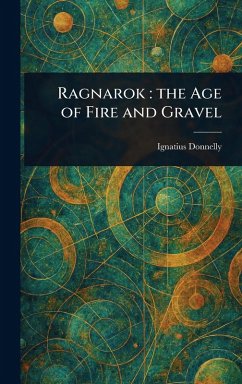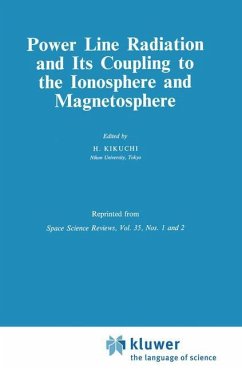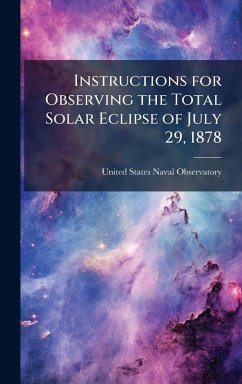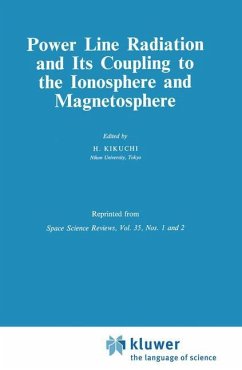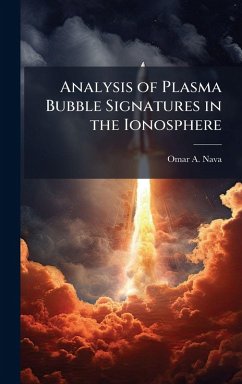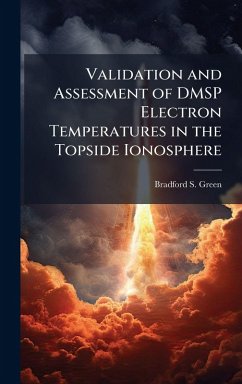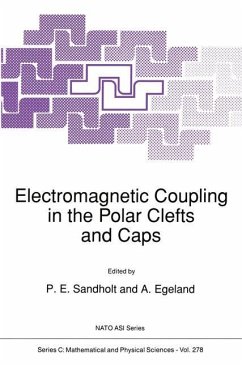
Dynamic Coupling of Quasi-Electrostatic Thundercloud Fields to the Mesosphere and Lower Ionosphere
Versandkostenfrei!
Versandfertig in über 4 Wochen
29,99 €
inkl. MwSt.
Weitere Ausgaben:

PAYBACK Punkte
15 °P sammeln!
Red Sprites and Blue Jets are two different types of recently discovered optical flashes ob- served above large thunderstorm systems. Sprites are luminous glows occurring at altitudes typically ranging from approximately 50 to 90 km. In video they exhibit a red color at their top which gradually changes to blue at lower altitudes. Sprites may occur singly or in clusters of two or more. The lateral extent of "unit" sprites is typically 5-10 km and they endure for several milliseconds. Jets are upward moving (approximately 100 km/s) highly collimated beams of luminosity, emanating from the tops ...
Red Sprites and Blue Jets are two different types of recently discovered optical flashes ob- served above large thunderstorm systems. Sprites are luminous glows occurring at altitudes typically ranging from approximately 50 to 90 km. In video they exhibit a red color at their top which gradually changes to blue at lower altitudes. Sprites may occur singly or in clusters of two or more. The lateral extent of "unit" sprites is typically 5-10 km and they endure for several milliseconds. Jets are upward moving (approximately 100 km/s) highly collimated beams of luminosity, emanating from the tops of thunderclouds, extending up to approximately 50 km altitude and exhibiting a primarily blue color. We propose that sprites result from large electric field transients capable of causing electron heating, breakdown ionization and excitation of optical emissions at mesospheric altitudes following the removal of thundercloud charge by a cloud-to-ground discharge. Depending on the history of charge accumulation and removal, and the distribution of ambient atmospheric conductivity, the breakdown region may have the shape of vertically oriented ionization column(s). Results of a two-dimensional and self consistent quasi-electrostatic (QE) model indicate that most of the observed features of sprites can be explained in terms of the formation and self-driven propagation of streamer type channels of breakdown ionization. Comparison of the optical emission intensities of the 1st and 2nd positive bands of N2, Meinel and 1st negative bands of N2(+) and the 1st negative band of O2(+) demonstrates that the 1st positive band of N2 is the dominant optical emission in the altitude range approximately 50-90 km, which accounts for the observed red color of sprites. This work has been selected by scholars as being culturally important, and is part of the knowledge base of civilization as we know it. This work was reproduced from the original artifact, and remains as true to the original work as possible. Therefore, you will see the original copyright references, library stamps (as most of these works have been housed in our most important libraries around the world), and other notations in the work. This work is in the public domain in the United States of America, and possibly other nations. Within the United States, you may freely copy and distribute this work, as no entity (individual or corporate) has a copyright on the body of the work. As a reproduction of a historical artifact, this work may contain missing or blurred pages, poor pictures, errant marks, etc. Scholars believe, and we concur, that this work is important enough to be preserved, reproduced, and made generally available to the public. We appreciate your support of the preservation process, and thank you for being an important part of keeping this knowledge alive and relevant.




